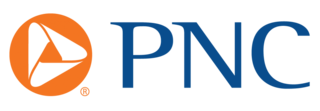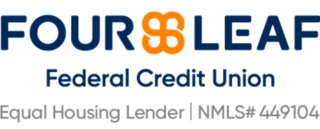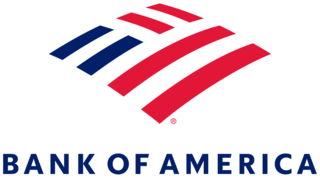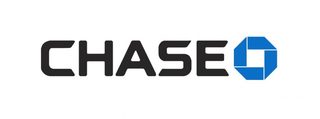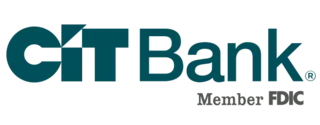Best Banks and Credit Unions for Students for 2026
Money management is an essential skill, and the right student bank account can help you learn the ropes. Many student bank accounts come with low (or no) fees and less stringent requirements.
To help you find the best banks and credit unions for students, Money researched over 50 financial institutions. Based on their student offerings, fees and customer service, here are our choices for the best banks and credit unions for students for 2026:
- PNC – Best Overall
- FourLeaf Credit Union – Best for High School Students
- Bank of America – Best for Checking
- Poppy Bank – Best High-Yield Savings
- Citizens – Best Free Account
- Chase – Best for New Account Offer
*Rates and APYs are subject to change. All information provided was accurate as of Oct. 14, 2025.
PNC gets the nod as the best overall bank for students. Its Virtual Wallet Student is specifically designed for young learners, combining checking and savings with digital tools to help students better manage their money. The account offers no monthly service fees for up to six years, financial webinars, educational articles and calculators to help students budget, plan and save money.
With the PNC app's Low Cash Mode, students have more control of their funds when their balances are low, providing extra time to get their balances out of the negative. PNC's network of 60,000 fee-free ATMs provides exceptional accessibility. However, the bank's Virtual Wallet Savings APY of 0.03% is relatively low, and although its student checking account is interest-bearing, its APY is just 0.01% and there is a $25 minimum balance requirement.
- A wealth of educational resources for students
- Interest-bearing checking
- No monthly service fees for up to six years
- Relatively low APYs
- Minimum balance requirement for checking
- Overdraft fees
FourLeaf has 480,000 members and 37 publicly accessible branches throughout Long Island, New York City and New Jersey, but members are not required to live in that region — residents of all 50 states can join with just a minimum $5 share account deposit. The credit union's student checking account is designed for learners ages 13 to 20. The account does not carry a minimum balance requirement nor does it have monthly service fees or overdraft fees. FourLeaf offers 30,000 fee-free ATMs nationwide through the Co-op ATM Network.
One thing to consider is that FourLeaf's student checking account is not interest-bearing, and while its student savings account currently offers an APY of 5.00%, that is limited to balances up to $1,000. When account holders reach the age of 21, the Student Checking Account automatically converts to a FourLeaf Free Checking Account.
- No minimum balance, service fees or overdraft fees
- Open to students ages 13 to 20
- High APY on balances up to $1,000
- Student checking account is not interest-bearing
- Users report comparatively outdated digital banking tools
For the second year in a row, Bank of America is Money's top pick for the best checking account for students. The second largest bank in the U.S. by consolidated assets offers to checking accounts for students: the SafeBalance Banking account (available to those ages 16 and older) and the SafeBalance for Family Banking account (with parental controls and available to those ages six to 16). Both accounts automatically decline all overdrafts. Additionally, neither charge monthly maintenance fees.
For students over the age of 25, Bank of America will charge monthly maintenance fees. However, that fee can be waived by maintaining an average daily balance of $500. These accounts also include the Keep the Change program, which rounds up purchases to the nearest dollar and deposits the difference in a savings account. Bank of America's ATM network has 15,000 locations, but it doesn't reimburse for out-of-network fees.
- No monthly service fees
- Parental controls for those ages 6 to 16
- Automatic and permanent overdraft decline setting
- No paper checks
- No out-of-network ATM reimbursement
- Monthly service fees after age 25
Poppy Bank's Poppy Student Savings accounts make the financial institution a clear-cut winner for this category. The bank currently offers a 4.00% APY for those accounts, combined with no monthly service charges or transaction fees. However, student savings accounts carry a $50 minimum balance requirement. While the bank's branches are limited to California locations, its 61,000 surcharge-free nationwide ATMs make the bank accessible to those around the country.
Poppy Bank also offers student checking accounts, but they aren't interest-bearing and also require a $50 minimum balance. Poppy Bank is 5-star rated by BauerFinancial, the nation's leading independent bank and credit union rating firm, demonstrating superior security and stability.
- No monthly service fees
- High APY for student savings accounts
- Exceptional security rating
- $50 minimum balance requirement
- Charges overdraft fees
Citizens Student Banking includes both fee-free checking and savings accounts for young learners. The accounts do not require minimum balances, nor do the charge overdraft fees. Although Citizens' student checking accounts are interest-bearing, they offer a relatively low APY. The bank also offers students unlimited fee-free ATM use. That is helpful since Citizens operates 991 branches in 11 states, but its ATM network is limited to 3,200 locations.
Citizens also provides students with industry-leading tools, webinars and an extensive content library aimed at helping them improve their financial literacy at a crucial age. Additionally, its college planning platform — College Raptor — provides a one-stop shop for discovering affordable colleges, choosing majors and career paths and finding scholarships.
- Fee-free student checking and savings
- No minimum balance requirements
- A wealth of financial education content
- Relatively low APY on student checking
- Comparatively lower Trustpilot rating
Chase is well-known as a banking behemoth. The financial institution is the largest in the United States by consolidated assets, and its product and service offerings are top-tier. The bank operates 5,038 branches in 48 states but is available to customers in all 50 states. Currently, Chase is offering a $125 bonus for students who open a new Chase College Checking account and complete at least 10 qualifying transactions within 60 days of opening the account. That offer is available to students ages 17 to 24 and expires on Oct. 15, 2025.
Both its Chase College Checking and Chase High School Checking accounts are fee-free, but the bank does charge overdraft fees for its college account holders. Additionally, its student checking accounts are not interest-bearing.
- Operates 5,038 branches in 48 states
- Offering an attractive new account bonus for students
- No monthly service fees for high school and college checking
- Charges college students overdraft fees
- Student checking is not interest-bearing
- Out-of-network ATM fees
How we chose the Best Banks of 2026
To determine our list of Best Banks for 2026, Money staff evaluated hundreds of the largest retail banks, credit unions, regional and state banks, ranked by assets, and 20 of the most popular online banks. We then compared opening balance requirements, interest paid, fees and features to determine our top picks.
To determine the best banks and credit unions for students, we researched leading financial institutions, compared bank account options, rates, deposit minimums, fees and added benefits and features to select our top choices. We placed particular emphasis on banks that offer accounts to high school and college students. We also prioritized banks with broad ATM networks and low fees.
You can read our full methodology here.




